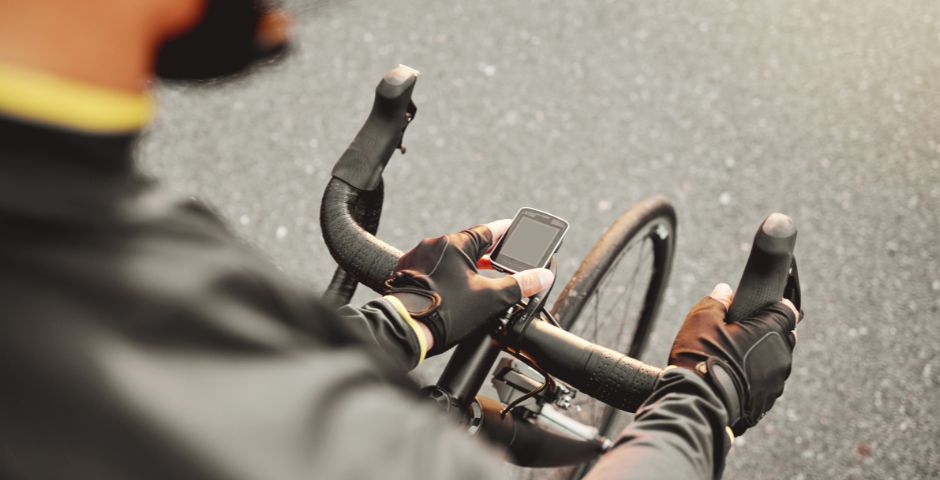When we dive into the world of cycling, whether as amateurs or professionals, a common question is how we can effectively measure our progress. Performance data not only reflects where we are today, but also tells us how to optimise our training to reach new goals.
In this article, we will explore the various types of data you can consider to evaluate your cycling progress to get the most out of both training and racing.
What is personal and professional performance?
Performance can be defined according to the situation you are in. Depending on your personal or professional goals.
For a recreational cyclist, it might mean increasing the distance you can ride comfortably, while for a competitor performance improvement might be in improving times on specific rides or competitions. Regardless of your level, data plays a crucial role in monitoring and improving your performance.
Measuring performance is critical because it provides a baseline from which you can begin to implement changes and measure progress. Without data, it would be like training blind. Cyclists who track their performance can make informed adjustments to their training, diet, and rest to optimise their efficiency and results.
Look at the following data
- Normalised power: It is recommended to use normalised power over average power, especially on rides with elevation variations, as it provides a better representation of actual effort by not counting non-pedalling moments.
- Heart rate: Monitor heart rate for 60 minutes and use pulse-based training zones to accurately adjust training intensity.
- Cadence: Observe average and maximum cadence, as it can indicate pedalling efficiency and the appropriateness of training to specific targets.
- YEF (Yield Exercise Factor): is an indicator of the percentage of effort exerted during the session, useful for understanding the relative intensity of training to the rider’s maximum potential.
- Specific training data such as distance, duration, speed, and calories burned are useful for general monitoring, but should be supplemented with power and heart rate analysis for a more complete assessment of performance.
These are some crucial data for coaches and athletes to determine training and competition strategies. Gadgets like cycling simulators, such as BKOOL, offer a rich variety of metrics that help simulate real-world conditions and measure how cyclists respond to different challenges.

Tools and applications for performance monitoring
Today’s market offers a wide range of tools and apps designed for cyclists. Platforms such as BKOOL allow users to not only train in a virtual environment that simulates real rides and competitions, but also to meticulously track every detail of their performance. These tools have become indispensable for cyclists who want to take their training to the next level.
Analysing the data collected is just as important as collecting it. By using analysis software, cyclists and their coaches can visualise trends, identify areas for improvement, and adjust training loads. This analysis helps ensure that each training session is effective and contributes to the cyclist’s continued growth.
Top elite cyclists are taking notice of the data
Let’s consider some examples of cyclists who have effectively used data to improve their performance. Some have managed to significantly reduce their times on certain routes by optimising their training based on data collected by simulators such as BKOOL.
One of the paradigmatic examples is Mathieu Van der Poel. The Dutchman wears a device that has captured the attention of many in the cycling world: an advanced activity wristband.
How one of the world’s sporting stars measures up
This gadget is a sophisticated system that constantly records multiple physiological parameters, offering a comprehensive view of the athlete’s physical condition. This technology represents a breakthrough in what is known as “invisible training”, i.e. those aspects outside conventional training, such as recovery and nutrition, which are essential for optimal performance.

The wristband is distinguished by its ability to collect data continuously, including heart rate, heart rate variability, body temperature, sleep quality and quantity, and respiratory rate, among others. This comprehensive monitoring allows coaches to fine-tune training plans, anticipate potential illnesses and better understand the physical load the athlete can handle. The minimalist design of the wristband, with no screens or buttons, facilitates continuous use without interfering with daily routine or training. This making it a valuable tool for both competitive and everyday training.
The use of data in cycling is more than a trend; it’s an essential part of training smart and continually improving. Whether you’re just starting out in cycling or you’re a seasoned pro, integrating data into your training regime can provide you with the tools you need to reach and exceed your goals. Don’t underestimate the power of data; it can be the key to unlocking your full potential in cycling.
BKOOL is the most complete cycling simulator on the market, try it FREE for 7 days!
 Go to BKOOL
Go to BKOOL





